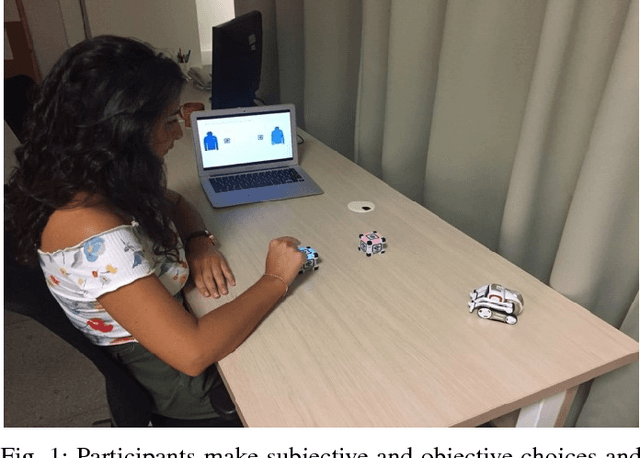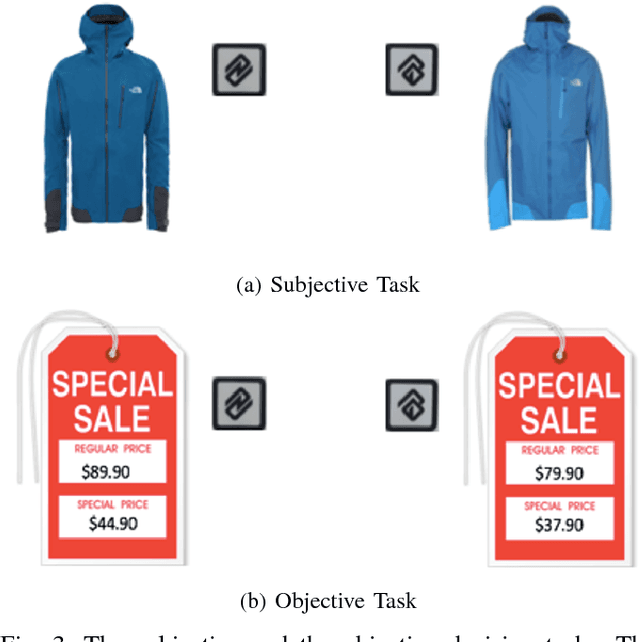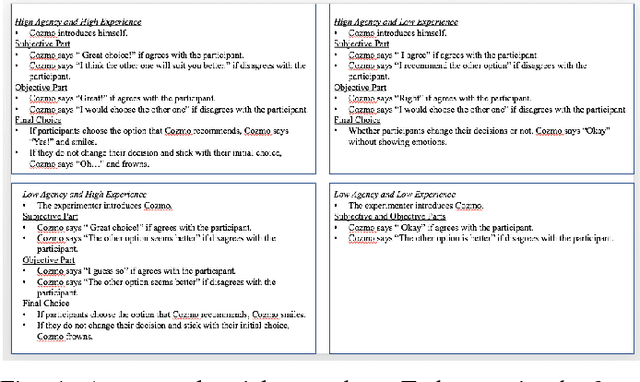Terry Eskenazi
Mind in the Machine: Perceived Minds Induce Decision Change
Nov 02, 2018



Abstract:Recent research on human robot interaction explored whether people's tendency to conform to others extends to artificial agents (Hertz & Wiese, 2016). However, little is known about to what extent perception of a robot as having a mind affects people's decisions. Grounded on the theory of mind perception, the current study proposes that artificial agents can induce decision change to the extent in which individuals perceive them as having minds. By varying the degree to which robots expressed ability to act (agency) or feel (experience), we specifically investigated the underlying mechanisms of mind attribution to robots and social influence. Our results show an interactive effect of perceived experience and perceived agency on social influence induced by artificial agents. The findings provide preliminary insights regarding autonomous robots' influence on individuals' decisions and form a basis for understanding the underlying dynamics of decision making with robots.
Flow From Motion: A Deep Learning Approach
Mar 26, 2018



Abstract:Wearable devices have the potential to enhance sports performance, yet they are not fulfilling this promise. Our previous studies with 6 professional tennis coaches and 20 players indicate that this could be due the lack of psychological or mental state feedback, which the coaches claim to provide. Towards this end, we propose to detect the flow state, mental state of optimal performance, using wearables data to be later used in training. We performed a study with a professional tennis coach and two players. The coach provided labels about the players' flow state while each player had a wearable device on their racket holding wrist. We trained multiple models using the wearables data and the coach labels. Our deep neural network models achieved around 98% testing accuracy for a variety of conditions. This suggests that the flow state or what coaches recognize as flow, can be detected using wearables data in tennis which is a novel result. The implication for the HCI community is that having access to such information would allow for design of novel hardware and interaction paradigms that would be helpful in professional athlete training.
 Add to Chrome
Add to Chrome Add to Firefox
Add to Firefox Add to Edge
Add to Edge